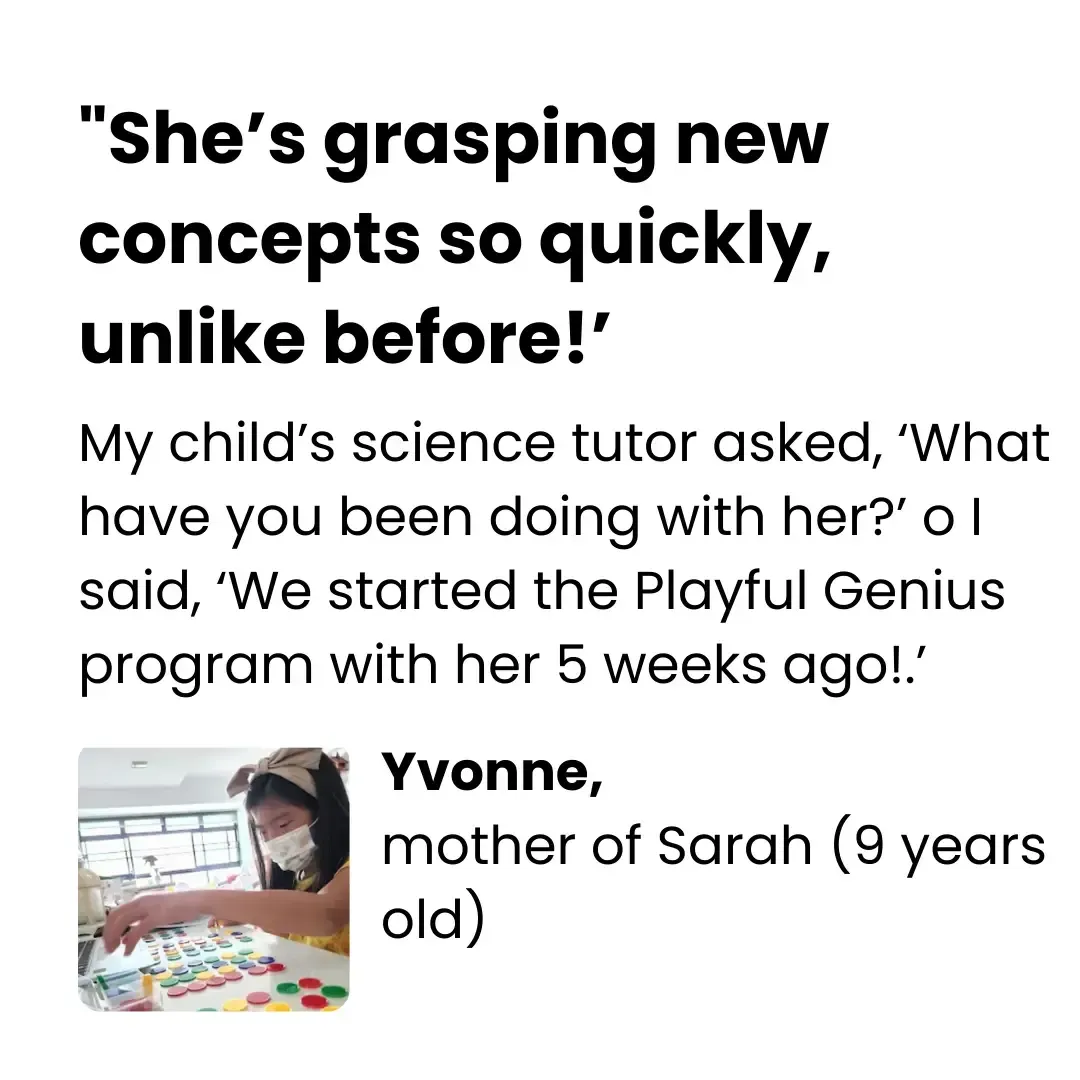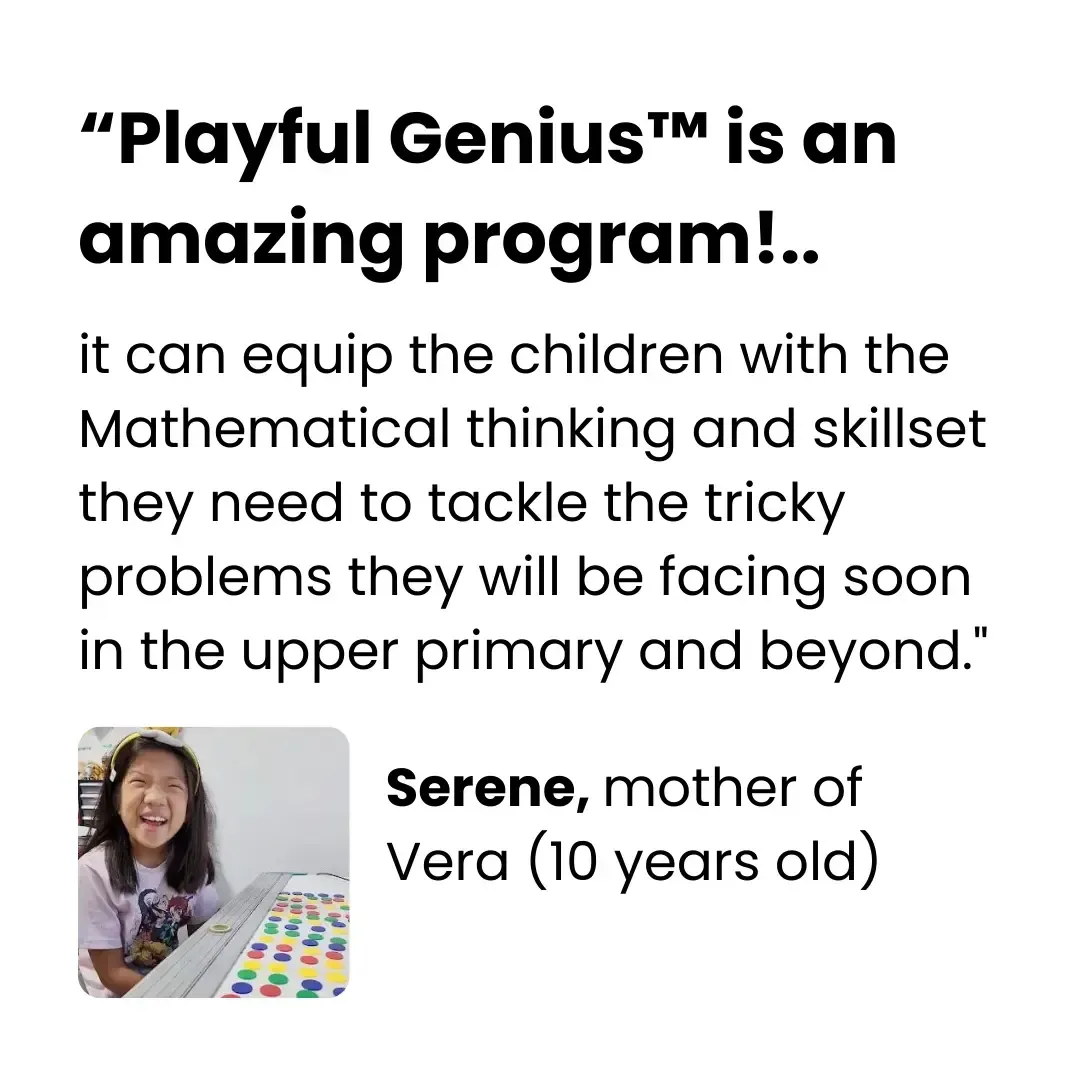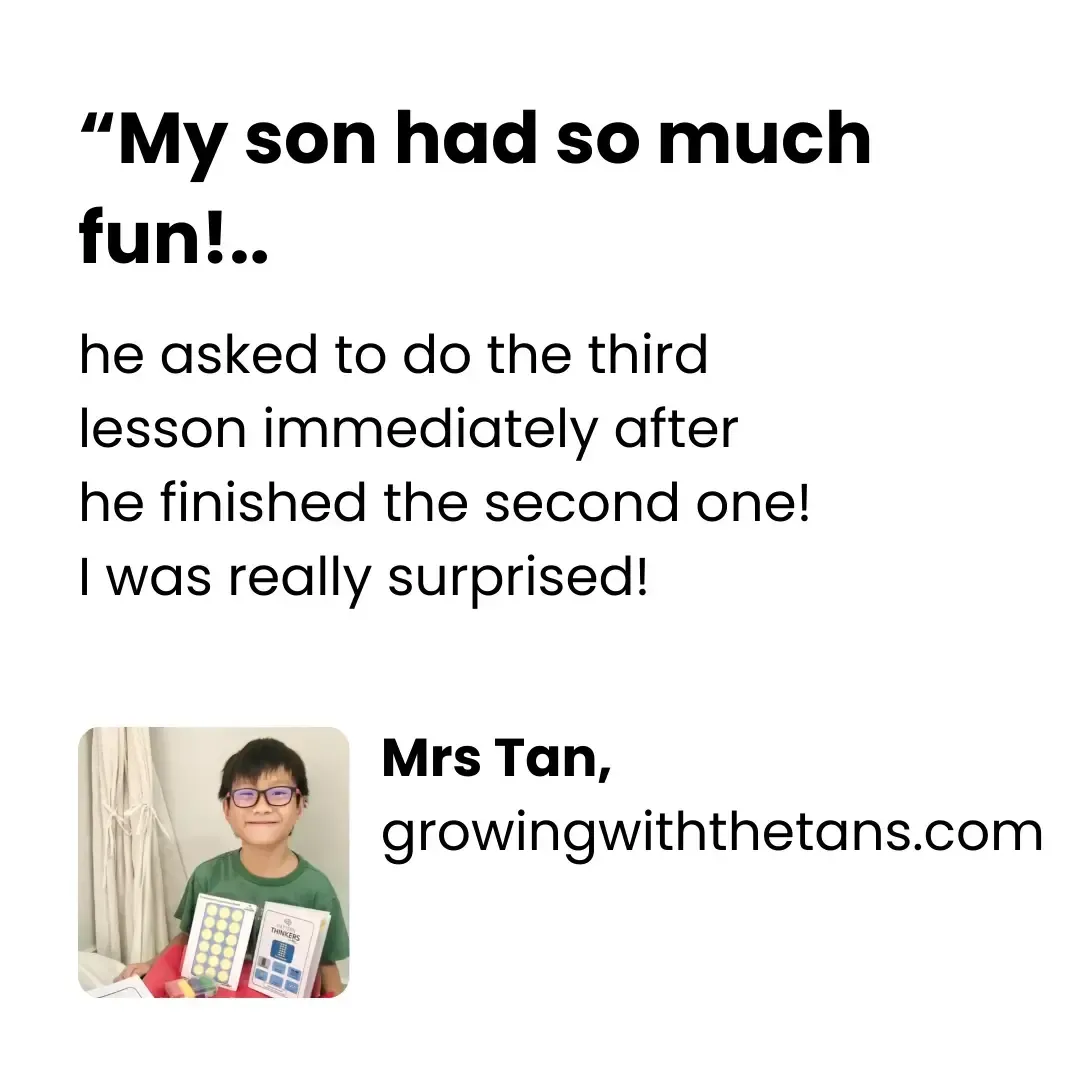

For Ages 6 to 12
For Ages 6 to 12
Struggling with math has nothing to do with intelligence, and everything to do with 4 overlooked skills...
Struggling with math has nothing to do with intelligence, and everything to do with 4 overlooked skills...
The Playful Genius system helps transform children aged 6 to 12 into math geniuses.
By developing their “VSAP” thinking —visual, systematic, analytical, and pattern recognition skills.
The Playful Genius system helps transform children aged 6 to 12 into math geniuses.
By developing their “VSAP” thinking —visual, systematic, analytical, and pattern recognition skills.
Unlike traditional methods that focus on memorization and repetition.
This 6-month program uses a brain-friendly, game-based approach, taking 15 minutes a day.
Kids from Grade 1 to 6 can excel in math through engaging stories and play with play kits.
Parents can expect to see results in as little as 30 days
while their children develop lasting math skills.
Unlike traditional methods that focus on memorization and repetition.
This 6-month program uses a brain-friendly, game-based approach, taking 15 minutes a day.
Kids from Grade 1 to 6 can excel in math through engaging stories and play with play kits.
Parents can expect to see results in as little as 30 days while their children develop lasting math skills.

For Ages 6 to 12
Struggling with math has nothing to do with intelligence,
and everything to do with
4 overlooked skills...
The Playful Genius system helps transform
children aged 6 to 12 into math geniuses.
By developing their “VSAP” thinking —visual,
systematic, analytical, and pattern recognition skills.
Watch the 25 min Playful Genius documentary above
Unlock your child’s potential with the Playful Genius system in just 30 days! Sign up for Playful Genius—15 minutes a day for 6 months to build lasting math skills and confidence.
Watch the 25 min Playful Genius documentary above
Unlock your child’s potential with the Playful Genius system in just 30 days! Sign up for Playful Genius—15 minutes a day for 6 months to build lasting math skills and confidence.
One-time investment
$4200
4 lessons per month.
Access to the Playful Genius System.
Entire vault of 24 video lessons for the 6 month program. 1 video lesson unlocked each week.
1 Play Kit per month
1 Tutor to review your child's weekly assignment and progress.
Try risk free for 30 days*

For your security, all orders are processwd
One-time investment
$4200
4 lessons per month.
Access to the Playful Genius System.
Entire vault of 24 video lessons for the 6 month program. 1 video lesson unlocked each week.
1 Play Kit per month
1 Tutor to review your child's weekly assignment and progress.
Try risk free for 30 days*

For your security, all orders are processed on a secured server.
Help your child install math geniuses’ way of thinking in just 30 days!
Through our unique, game-based approach, your child will install critical VSAP (Visual, Systematic, Analytical, Pattern) thinking skills that are essential for math success.
With just 15 minutes a day, your child will see immediate improvement in their ability to solve math problems and gain confidence.
The full 6-month program ensures lasting results, turning math struggles into strengths. Start today and watch your child thrive, both in school and beyond!
Past Results
71%
of students get 3 grades jump within 12 months.
78%
of students report less stress and anxiety with Math.
64%
of students get more free time to play.
Help your child install math geniuses’ way of thinking in just 30 days!
Through our unique, game-based approach, your child will install critical VSAP (Visual, Systematic, Analytical, Pattern) thinking skills that are essential for math success.
With just 15 minutes a day, your child will see immediate improvement in their ability to solve math problems and gain confidence.
The full 6-month program ensures lasting results, turning math struggles into strengths. Start today and watch your child thrive, both in school and beyond!
Past Results
71%
of students get 3 grades jump within 12 months.
78%
of students report less stress and anxiety with Math.
64%
of students get more free time to play.
This program is for you if :
Your child struggles with math anxiety, frustration, or lack of confidence.
You want your child to develop lasting math skills without the need for memorization or repetitive drilling.
You’re seeking a fun, engaging way to help your child think like a math genius in just 15 minutes a day.
You’ve tried traditional math tutoring but haven’t seen the results you were hoping for.
You want to see noticeable improvement in your child’s math abilities within just 30 days.
You want to become immune to stress & anxiety
This program is for you if :
Your child struggles with math anxiety, frustration, or lack of confidence.
You want your child to develop lasting math skills without the need for memorization or repetitive drilling.
You’re seeking a fun, engaging way to help your child think like a math genius in just 15 minutes a day.
You’ve tried traditional math tutoring but haven’t seen the results you were hoping for.
You want to see noticeable improvement in your child’s math abilities within just 30 days.
You want to become immune to stress & anxiety
Your child will grow in these areas:
Visual Thinking: They’ll learn to “see” relationships between numbers, shapes, and patterns, making math easier to understand and solve.
Systematic Thinking: They’ll develop strong logic and reasoning skills. Allowing them to approach problems in an organized and structured way.
Analytical Skills: They’ll learn to break down and analyze math questions step by step. Leading to more accurate solutions and faster problem-solving.
Pattern Recognition: They’ll learn to spot and understand patterns in math. Helping them solve problems more efficiently and see connections others might miss.
Problem-solving: They’ll develop a deeper understanding of math concepts. And how to approach complex problems with ease.
Critical thinking: Learn to think analytically and spot patterns like a math genius.
Confidence: Math anxiety will fade as they become more self-assured in their abilities.
Focus: Improved attention and concentration when tackling math problems.
Creativity: They’ll discover fun, out-of-the-box ways to solve math challenges.
Your child will grow in these areas:
Visual Thinking: They’ll learn to “see” relationships between numbers, shapes, and patterns, making math easier to understand and solve.
Systematic Thinking: They’ll develop strong logic and reasoning skills. Allowing them to approach problems in an organized and structured way.
Analytical Skills: They’ll learn to break down and analyze math questions step by step. Leading to more accurate solutions and faster problem-solving.
Pattern Recognition: They’ll learn to spot and understand patterns in math. Helping them solve problems more efficiently and see connections others might miss.
Problem-solving: They’ll develop a deeper understanding of math concepts. And how to approach complex problems with ease.
Critical thinking: Learn to think analytically and spot patterns like a math genius.
Confidence: Math anxiety will fade as they become more self-assured in their abilities.
Focus: Improved attention and concentration when tackling math problems.
Creativity: They’ll discover fun, out-of-the-box ways to solve math challenges.
Designed in Singapore

The Playful Genius system is designed in Singapore where students are top 1% in the whole world in Mathematics right alongside China. Excluding China, Singapore kids are #1 out of 81 OECD countries in Maths.
On top of this, Playful Genius’s co-founder, Dr. Norman Tien has routinely been invited to coach school teachers in Singapore’s Math departments “how to teach Math”.
This means you’re getting access to a unique and proven system that nurtures kids into world-class maths students without stress, anxiety and frustration.
Designed in Singapore
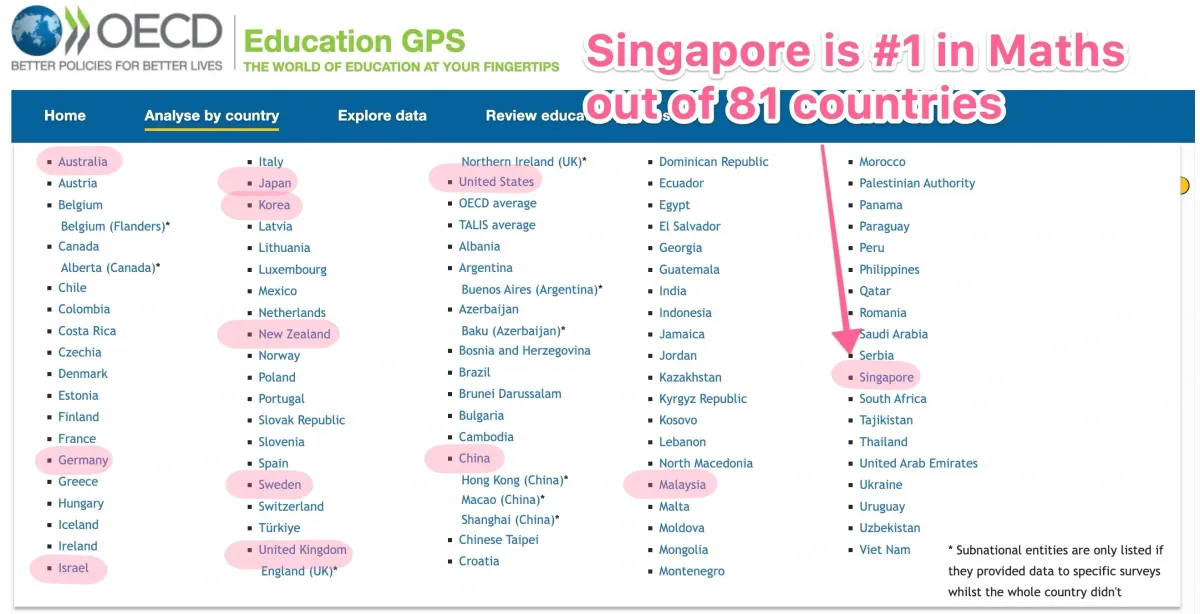
The Playful Genius system is designed in Singapore where students are top 1% in the whole world in Mathematics right alongside China. Excluding China, Singapore kids are #1 out of 81 OECD countries in Maths.
On top of this, Playful Genius’s co-founder, Dr. Norman Tien has routinely been invited to coach school teachers in Singapore’s Math departments “how to teach Math”.
This means you’re getting access to a unique and proven system that nurtures kids into world-class maths students without stress, anxiety and frustration.
How the Playful Genius System works
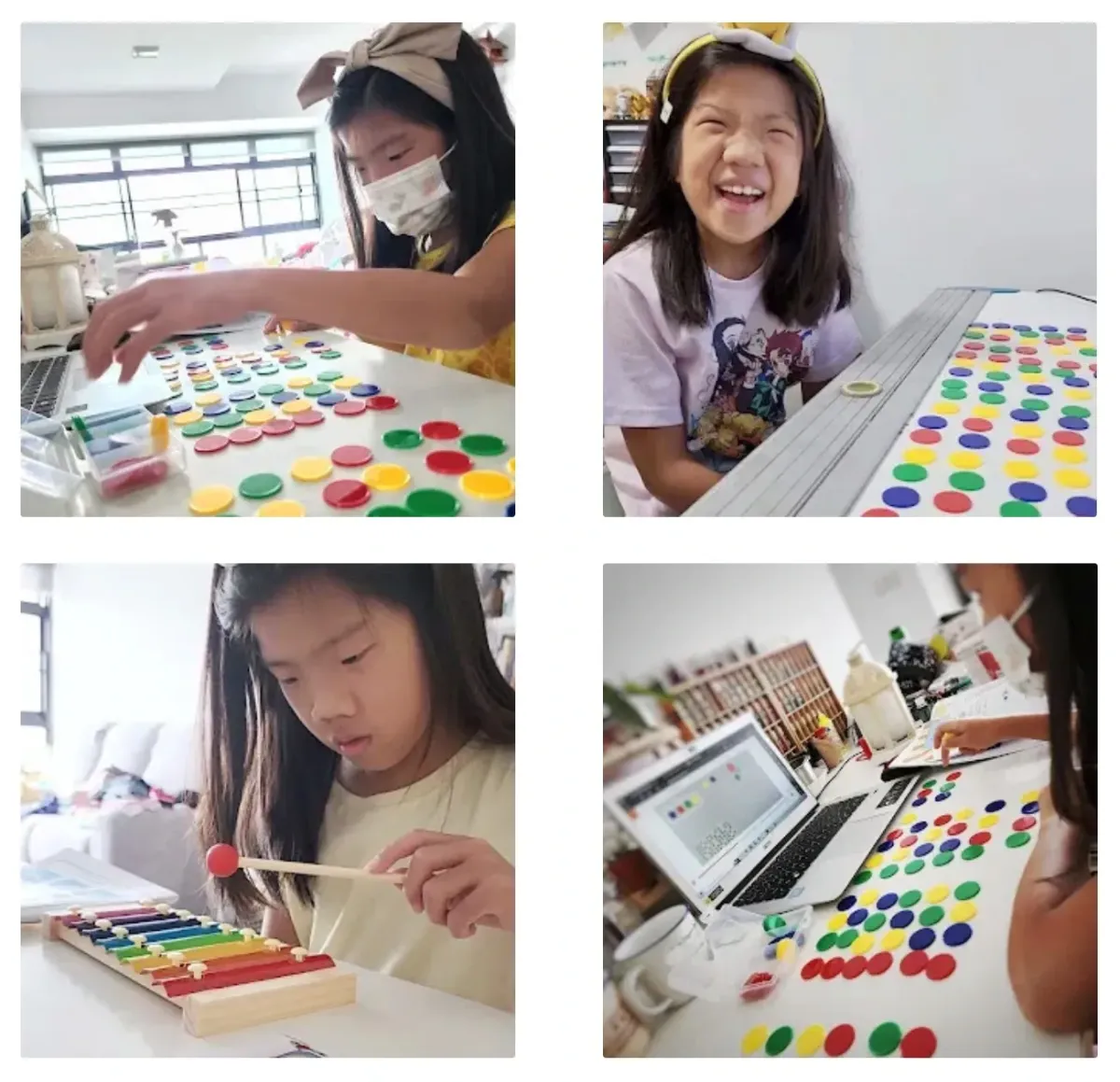
How the Playful Genius System works

Game-based Learning
Through engaging games and stories, kids absorb advanced math concepts without realizing it.
Our program is so well-designed that even grade 1 students can handle grade 6 math problems.
VSAP Thinking
It develops Visual, Systematic, Analytical, and Pattern recognition skills, which are key to mastering math.
Weekly Video Lessons
It develops Visual, Systematic, Analytical, and Pattern recognition skills, which are key to mastering math.
15 Minutes of Play
With just 15 minutes of play thrice a week, your child will learn advanced math concepts without realizing it, without memorization or stress. We ship the play kits to your home monthly - hassle free!
Tutor Assessment
On top of that, every student is assigned a dedicated tutor. We need your help to video record your child as they complete the weekly assignment. And submit the video on to our portal. Your child’s tutor will analyze the video to ensure they’re using the correct process.
See Results in 30 Days
Parents often see a big improvement in their child’s math abilities within the first month (4 lessons).
6-Month Program
Over 6 months, kids get 24 engaging lessons that help them build lasting math confidence and problem-solving skills.
Game-based Learning
Through engaging games and stories, kids absorb advanced math concepts without realizing it.
Our program is so well-designed that even grade 1 students can handle grade 6 math problems.
VSAP Thinking
It develops Visual, Systematic, Analytical, and Pattern recognition skills, which are key to mastering math.
Weekly Video Lessons
It develops Visual, Systematic, Analytical, and Pattern recognition skills, which are key to mastering math.
15 Minutes of Play
With just 15 minutes of play thrice a week, your child will learn advanced math concepts without realizing it, without memorization or stress. We ship the play kits to your home monthly - hassle free!
Tutor Assessment
On top of that, every student is assigned a dedicated tutor. We need your help to video record your child as they complete the weekly assignment. And submit the video on to our portal. Your child’s tutor will analyze the video to ensure they’re using the correct process.
See Results in 30 Days
Parents often see a big improvement in their child’s math abilities within the first month (4 lessons).
6-Month Program
Over 6 months, kids get 24 engaging lessons that help them build lasting math confidence and problem-solving skills.
Program curriculum
The Playful Genius system is a 6-month journey designed to unlock your child’s math genius potential through fun, game-based learning.
In just 15 minutes per session, thrice a week, your child will install the Math Genius’s way of thinking.
Specifically, they will develop Visual, Systematic, Analytical, and Pattern (VSAP) thinking skills essential for math success and beyond.
The beauty of the Playful Genius approach is that children learn advanced Math concepts naturally and effectively through play without realising it.
As a result, grade 1 students can potentially handle grade 6 math problems.
Lastly, whether it’s math, science, or critical thinking, your child will build confidence and skills that last a lifetime.
The video lessons are accessible on any device—personal computer, tablet, or smartphone.
Play kits will be shipped to your door step. And your child will have a tutor to review their assignment each week.
Core Skill #1
Visual Thinking:
“See” relationships
The Playful Genius curriculum is designed to enhance Visual Thinking, a key skill that helps children “see” relationships between numbers, shapes, and patterns, making math easier to understand and solve. Here’s how the program develops visual thinking:
Read More
Making Abstract Concepts Tangible: Through interactive, game-based activities, children learn to turn abstract ideas into mental images—such as picturing fractions as slices of pizza—children grasp concepts faster and with greater clarity.
Seeing Connections Between Numbers: The system teaches children to spot relationships and patterns between numbers. By visualizing how numbers or shapes relate to one another, children can break down complex math problems and understand how each part fits into the bigger picture.
Mastering Word Problems: Visual thinking is vital for solving word problems, and Playful Genius encourages children to translate scenarios into visual representations. Whether it’s imagining the division of items or understanding distances, visualizing the problem leads to more accurate and confident problem-solving.
Speeding Up Problem-Solving: With visual thinking exercises, children become faster at solving problems. They quickly identify patterns, sequences, or geometric relationships, allowing them to solve even complex problems with greater speed and accuracy.
Core Skill #2
Systematic Thinking:
Break problems down
Read More
Systematic Thinking is all about breaking problems down into clear, logical steps and following a structured approach to reach solutions. Here’s how Playful Genius develops this skill:
Step-by-Step Problem Solving: The system teaches children to approach math problems one step at a time. Instead of feeling overwhelmed by complex tasks, they learn to focus on each individual part, solving it logically before moving on to the next.
Organizing Thoughts and Information: By helping children structure their thinking, Playful Genius improves their ability to stay organized while tackling multi-step problems in math. This systematic approach reduces errors and builds confidence.
Applying Logic Across Subjects: While essential in math, systematic thinking also benefits science, reading, and writing. The program encourages children to apply the same step-by-step approach to science experiments, story comprehension, and writing projects, improving their focus and results across the board.
Real-World Problem Solving: Beyond math, Playful Genius teaches children how to apply systematic thinking to everyday situations—whether it’s organizing tasks, following instructions, or solving real-life problems. This practical skill helps children succeed in school and beyond.
Core Skill #3
Analytical Thinking:
Compare Solutions
Read More
Analytical Thinking enables children to break down problems, compare solutions, and make logical decisions. Here’s how Playful Genius builds analytical thinking:
Breaking Down Complex Problems: Children are taught to break complex math problems into smaller, more manageable parts. By analyzing the components of a problem, they gain a deeper understanding and develop more effective problem-solving strategies.
Comparing Solutions: The program emphasizes evaluating multiple methods for solving a problem. Children learn to weigh the pros and cons of different approaches, helping them choose the best and most efficient solution.
Strengthening Critical Reasoning: Playful Genius strengthens critical reasoning by encouraging children to ask “why” and “how” while solving problems. This analytical mindset improves their ability to understand the underlying logic in math, science, and even reading.
Building Confidence in Decision-Making: By analyzing problems thoroughly, children become more confident in making decisions. Whether it’s choosing the right approach to a math problem or evaluating options in everyday life, Playful Genius builds the skills necessary for smart, logical decision-making.
Core Skill #4
Pattern Thinking:
Make connections
Pattern Recognition is key to identifying trends, making connections, and solving problems quickly.
Here’s how the Playful Genius helps children master this essential skill:
Read More
Spotting Patterns in Math: The program teaches children to recognize patterns in numbers, shapes, and sequences. Whether it’s identifying number sequences in algebra or spotting symmetry in geometry. Pattern recognition is a powerful tool for solving problems faster and with more accuracy.
Predicting Outcomes: By identifying patterns, children learn to predict what comes next in a series of numbers or events. This ability boosts their problem-solving speed and makes advanced concepts like algebra and geometry easier to grasp.
Pattern Games and Challenges: Engaging, game-based activities in the Playful Genius curriculum help children practice pattern recognition in a fun, interactive way. These challenges sharpen their ability to spot patterns not only in math but also in everyday life.
Applying Patterns to Other Subjects: Pattern recognition isn’t just for math—it plays a role in reading, science, and even daily problem-solving. Children learn to see connections between ideas, whether it’s identifying recurring themes in a story or understanding natural cycles in science.
Program curriculum
The Playful Genius system is a 6-month journey designed to unlock your child’s math genius potential through fun, game-based learning.
In just 15 minutes per session, thrice a week, your child will install the Math Genius’s way of thinking.
Specifically, they will develop Visual, Systematic, Analytical, and Pattern (VSAP) thinking skills essential for math success and beyond.
The beauty of the Playful Genius
approach is that children learn advanced Math concepts naturally and effectively through play without realising it.
As a result, grade 1 students can potentially handle grade 6 math problems.
Lastly, whether it’s math, science, or critical thinking, your child will build confidence and skills that last a lifetime.
The video lessons are accessible on any device—personal computer, tablet, or smartphone.
Play kits will be shipped to your door step. And your child will have a tutor to review their assignment each week.
Core Skill #1
Visual Thinking:
“See” relationships
The Playful Genius curriculum is designed to enhance Visual Thinking, a key skill that helps children “see” relationships between numbers, shapes, and patterns, making math easier to understand and solve. Here’s how the program develops visual thinking:
Read More
Making Abstract Concepts Tangible: Through interactive, game-based activities, children learn to turn abstract ideas into mental images—such as picturing fractions as slices of pizza—children grasp concepts faster and with greater clarity.
Seeing Connections Between Numbers: The system teaches children to spot relationships and patterns between numbers. By visualizing how numbers or shapes relate to one another, children can break down complex math problems and understand how each part fits into the bigger picture.
Mastering Word Problems: Visual thinking is vital for solving word problems, and Playful Genius encourages children to translate scenarios into visual representations. Whether it’s imagining the division of items or understanding distances, visualizing the problem leads to more accurate and confident problem-solving.
Speeding Up Problem-Solving: With visual thinking exercises, children become faster at solving problems. They quickly identify patterns, sequences, or geometric relationships, allowing them to solve even complex problems with greater speed and accuracy.
Core Skill #2
Systematic Thinking:
Break problems down
Read More
Systematic Thinking is all about breaking problems down into clear, logical steps and following a structured approach to reach solutions. Here’s how Playful Genius develops this skill:
Step-by-Step Problem Solving: The system teaches children to approach math problems one step at a time. Instead of feeling overwhelmed by complex tasks, they learn to focus on each individual part, solving it logically before moving on to the next.
Organizing Thoughts and Information: By helping children structure their thinking, Playful Genius improves their ability to stay organized while tackling multi-step problems in math. This systematic approach reduces errors and builds confidence.
Applying Logic Across Subjects: While essential in math, systematic thinking also benefits science, reading, and writing. The program encourages children to apply the same step-by-step approach to science experiments, story comprehension, and writing projects, improving their focus and results across the board.
Real-World Problem Solving: Beyond math, Playful Genius teaches children how to apply systematic thinking to everyday situations—whether it’s organizing tasks, following instructions, or solving real-life problems. This practical skill helps children succeed in school and beyond.
Core Skill #3
Analytical Thinking:
Compare Solutions
Read More
Analytical Thinking enables children to break down problems, compare solutions, and make logical decisions. Here’s how Playful Genius builds analytical thinking:
Breaking Down Complex Problems: Children are taught to break complex math problems into smaller, more manageable parts. By analyzing the components of a problem, they gain a deeper understanding and develop more effective problem-solving strategies.
Comparing Solutions: The program emphasizes evaluating multiple methods for solving a problem. Children learn to weigh the pros and cons of different approaches, helping them choose the best and most efficient solution.
Strengthening Critical Reasoning: Playful Genius strengthens critical reasoning by encouraging children to ask “why” and “how” while solving problems. This analytical mindset improves their ability to understand the underlying logic in math, science, and even reading.
Building Confidence in Decision-Making: By analyzing problems thoroughly, children become more confident in making decisions. Whether it’s choosing the right approach to a math problem or evaluating options in everyday life, Playful Genius builds the skills necessary for smart, logical decision-making.
Core Skill #4
Pattern Thinking: Make connections
Pattern Recognition is key to identifying trends, making connections, and solving problems quickly.
Here’s how the Playful Genius helps children master this essential skill:
Read More
Spotting Patterns in Math: The program teaches children to recognize patterns in numbers, shapes, and sequences. Whether it’s identifying number sequences in algebra or spotting symmetry in geometry. Pattern recognition is a powerful tool for solving problems faster and with more accuracy.
Predicting Outcomes: By identifying patterns, children learn to predict what comes next in a series of numbers or events. This ability boosts their problem-solving speed and makes advanced concepts like algebra and geometry easier to grasp.
Pattern Games and Challenges: Engaging, game-based activities in the Playful Genius curriculum help children practice pattern recognition in a fun, interactive way. These challenges sharpen their ability to spot patterns not only in math but also in everyday life.
Applying Patterns to Other Subjects: Pattern recognition isn’t just for math—it plays a role in reading, science, and even daily problem-solving. Children learn to see connections between ideas, whether it’s identifying recurring themes in a story or understanding natural cycles in science.
Playful Genius™ Develops Your Child's Reaading, Writing and Science Skills Too
How Playful Genius™ Improves READING Performance
1. Visual Thinking: Picturing the Story
As your child reads, instead of just scanning the words, they create a vivid mental movie. The forest described in the book? They can see the trees, the sunlight filtering through the leaves. The characters? They visualize their faces, their clothes, even the way they move.
Enhanced Visual Thinking allows them to see the story as it unfolds, helping them follow the plot and remember details with ease. Suddenly, reading becomes an immersive experience where they’re not just reading words—they’re living the adventure.
2. Systematic Thinking: Following the Plot
As the story progresses, your child doesn’t lose track of what’s happening. Thanks to Enhanced Systematic Thinking, they can naturally organize the events in their mind: this happened first, then this, and that led to the next big moment. They see how the beginning connects to the middle and how it all builds toward the end.
Enhanced Systematic Thinking allows them to see the story’s structure like puzzle pieces that fit perfectly, making sure they never lose sight of the plot, no matter how complex the narrative gets.
3. Analytical Thinking: Understanding Deeper Meanings
When a character makes a decision, your child doesn’t just accept it—they pause, think, and ask themselves, “Why did they do that? What’s their motive?” Enhanced Analytical Thinking leads them to dig beneath the surface of the story.
They can spot cause and effect, predict what might happen next, and understand why certain events are important. They begin to explore the characters’ emotions, the deeper themes of the story, and how everything connects.
Reading becomes more than just following the plot—it’s about understanding the why behind the words.
4. Pattern Thinking: Recognizing Story Structure
As your child reads more, they start noticing recurring elements—how similar situations repeat, how certain phrases keep popping up, how the action rises and falls. With Pattern Thinking, they see the hidden structure of the story.
They know when a climax is building because they recognize the rhythm of rising tension, and they can anticipate outcomes because they’ve seen this type of scenario before.
Enhanced Pattern Thinking allows them to read stories like solving a puzzle, spotting clues and connecting dots, making reading a fun challenge to uncover the deeper patterns behind the plot.
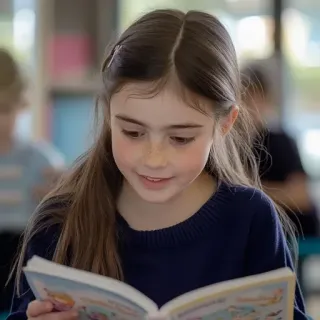
How Playful Genius™ Improves WRITING Performance
1. Visual Thinking: Organizing Ideas
Enhanced Visual Thinking allows them to confidently organize their thoughts before writing a single word, making the process smoother and more focused.
When your child sits down to write, instead of staring at a blank page, they can picture the entire story or essay in their mind. They see the introduction as a welcoming door, the body of their work as the key points leading the way, and the conclusion as the final chapter that ties it all together.
2. Systematic Thinking: Structuring the Writing
As your child writes, they no longer jump from idea to idea. Thanks to enhanced Systematic Thinking, they naturally map out their writing, following a logical flow.
First, they introduce the topic, then support it with details, and finally conclude with a clear closing statement. Like assembling building blocks, each section fits together perfectly, keeping their writing organized and on track from start to finish.
3. Analytical Thinking: Strengthening Arguments Enhanced Analytical Thinking allows them to weigh which facts best support their ideas and discard weaker ones.
When writing an essay or story, your child starts to compare and evaluate ideas. They don’t just include a point because it sounds good—they dig deeper, asking “why” and “how.”
With each point, they create a solid structure, backed by logical reasoning, turning their writing into a convincing, well-thought-out piece.
4. Pattern Thinking: Creating Cohesive Writing
As your child writes, they begin to notice patterns in their thoughts. Recurring themes, similar phrases, or linked ideas emerge.
Enhanced Pattern Thinking allows them to see that these patterns give their writing a natural flow, guiding the reader smoothly from one idea to the next.
Like the rhythm in a song, this recognition helps them eliminate confusion and ensures their writing stays cohesive and well-connected, making each part of their story or essay fit together seamlessly.

How Playful Genius™ Improves SCIENCE Performance
1. Visual Thinking: Understanding Scientific Processes Picture your child learning about the water cycle. With enhanced visual thinking skills, Instead of just memorizing words like evaporation and condensation, they visualize the process—water rising as vapor, forming clouds, and falling back as rain. This mental image helps them “see” how the cycle works, connecting each stage of the process with clarity.
By visualizing scientific concepts, they aren’t just recalling facts—they’re actively experiencing them in their mind, making the material easier to grasp.
2. Systematic Thinking: Conducting Experiments
Imagine your child performing a science experiment. With enhanced systematic thinking skills, they know that following each step in the right order is crucial. First, they form a hypothesis. Then, they gather materials, conduct the experiment, and carefully observe the results.
They don’t rush—they understand that skipping steps could throw off the whole experiment. Like following a recipe, this clear, step-by-step thinking keeps their process organized and accurate, leading to reliable results.
3. Analytical Thinking: Drawing Conclusions
After an experiment, your child doesn’t just look at the results—they analyze them. Why did the plant grow faster in sunlight? What could be improved for the next experiment?
With enhanced analytical thinking skills, they look beyond the surface and begin to compare variables, evaluate results, and draw logical conclusions. This critical thinking helps them connect what they observed to the broader scientific principles at play, deepening their understanding of the subject.
4. Pattern: Identifying Scientific Trends
Now picture your child studying the phases of the moon. Instead of simply learning the names of each phase, they start to notice a pattern—how the moon waxes and wanes in predictable cycles. With enhanced pattern thinking skills, they see the repetition and rhythm in nature, and it becomes easier to understand how scientific phenomena are connected.
Whether it’s recognizing trends in climate data or cycles in nature, this skill helps them connect the dots between seemingly unrelated concepts.

Playful Genius™ Develops Your Child's Reaading, Writing and Science Skills Too
Frequently Asked Questions
How Playful Genius™ Improves READING Performance
1. Visual Thinking: Picturing the Story
As your child reads, instead of just scanning the words, they create a vivid mental movie. The forest described in the book? They can see the trees, the sunlight filtering through the leaves. The characters? They visualize their faces, their clothes, even the way they move.
Enhanced Visual Thinking allows them to see the story as it unfolds, helping them follow the plot and remember details with ease. Suddenly, reading becomes an immersive experience where they’re not just reading words—they’re living the adventure.
2. Systematic Thinking: Following the Plot
As the story progresses, your child doesn’t lose track of what’s happening. Thanks to Enhanced Systematic Thinking, they can naturally organize the events in their mind: this happened first, then this, and that led to the next big moment. They see how the beginning connects to the middle and how it all builds toward the end.
Enhanced Systematic Thinking allows them to see the story’s structure like puzzle pieces that fit perfectly, making sure they never lose sight of the plot, no matter how complex the narrative gets.
3. Analytical Thinking: Understanding Deeper Meanings
When a character makes a decision, your child doesn’t just accept it—they pause, think, and ask themselves, “Why did they do that? What’s their motive?” Enhanced Analytical Thinking leads them to dig beneath the surface of the story.
They can spot cause and effect, predict what might happen next, and understand why certain events are important. They begin to explore the characters’ emotions, the deeper themes of the story, and how everything connects.
Reading becomes more than just following the plot—it’s about understanding the why behind the words.
4. Pattern Thinking: Recognizing Story Structure
As your child reads more, they start noticing recurring elements—how similar situations repeat, how certain phrases keep popping up, how the action rises and falls. With Pattern Thinking, they see the hidden structure of the story.
They know when a climax is building because they recognize the rhythm of rising tension, and they can anticipate outcomes because they’ve seen this type of scenario before.
Enhanced Pattern Thinking allows them to read stories like solving a puzzle, spotting clues and connecting dots, making reading a fun challenge to uncover the deeper patterns behind the plot.

How Playful Genius™ Improves WRITING Performance
1. Visual Thinking: Organizing Ideas
Enhanced Visual Thinking allows them to confidently organize their thoughts before writing a single word, making the process smoother and more focused.
When your child sits down to write, instead of staring at a blank page, they can picture the entire story or essay in their mind. They see the introduction as a welcoming door, the body of their work as the key points leading the way, and the conclusion as the final chapter that ties it all together.
2. Systematic Thinking: Structuring the Writing
As your child writes, they no longer jump from idea to idea. Thanks to enhanced Systematic Thinking, they naturally map out their writing, following a logical flow.
First, they introduce the topic, then support it with details, and finally conclude with a clear closing statement. Like assembling building blocks, each section fits together perfectly, keeping their writing organized and on track from start to finish.
3. Analytical Thinking: Strengthening Arguments Enhanced Analytical Thinking allows them to weigh which facts best support their ideas and discard weaker ones.
When writing an essay or story, your child starts to compare and evaluate ideas. They don’t just include a point because it sounds good—they dig deeper, asking “why” and “how.”
With each point, they create a solid structure, backed by logical reasoning, turning their writing into a convincing, well-thought-out piece.
4. Pattern Thinking: Creating Cohesive Writing
As your child writes, they begin to notice patterns in their thoughts. Recurring themes, similar phrases, or linked ideas emerge.
Enhanced Pattern Thinking allows them to see that these patterns give their writing a natural flow, guiding the reader smoothly from one idea to the next.
Like the rhythm in a song, this recognition helps them eliminate confusion and ensures their writing stays cohesive and well-connected, making each part of their story or essay fit together seamlessly.

How Playful Genius™ Improves SCIENCE Performance
1. Visual Thinking: Understanding Scientific Processes Picture your child learning about the water cycle. With enhanced visual thinking skills, Instead of just memorizing words like evaporation and condensation, they visualize the process—water rising as vapor, forming clouds, and falling back as rain. This mental image helps them “see” how the cycle works, connecting each stage of the process with clarity.
By visualizing scientific concepts, they aren’t just recalling facts—they’re actively experiencing them in their mind, making the material easier to grasp.
2. Systematic Thinking: Conducting Experiments
Imagine your child performing a science experiment. With enhanced systematic thinking skills, they know that following each step in the right order is crucial. First, they form a hypothesis. Then, they gather materials, conduct the experiment, and carefully observe the results.
They don’t rush—they understand that skipping steps could throw off the whole experiment. Like following a recipe, this clear, step-by-step thinking keeps their process organized and accurate, leading to reliable results.
3. Analytical Thinking: Drawing Conclusions
After an experiment, your child doesn’t just look at the results—they analyze them. Why did the plant grow faster in sunlight? What could be improved for the next experiment?
With enhanced analytical thinking skills, they look beyond the surface and begin to compare variables, evaluate results, and draw logical conclusions. This critical thinking helps them connect what they observed to the broader scientific principles at play, deepening their understanding of the subject.
4. Pattern: Identifying Scientific Trends
Now picture your child studying the phases of the moon. Instead of simply learning the names of each phase, they start to notice a pattern—how the moon waxes and wanes in predictable cycles. With enhanced pattern thinking skills, they see the repetition and rhythm in nature, and it becomes easier to understand how scientific phenomena are connected.
Whether it’s recognizing trends in climate data or cycles in nature, this skill helps them connect the dots between seemingly unrelated concepts.

What Parents Say About The Program
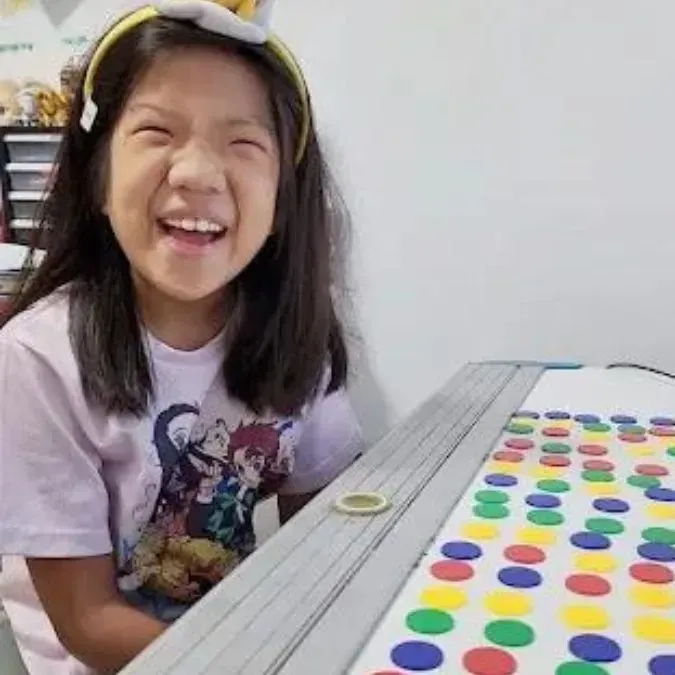
"A.J. Juliani once said, ‘Our job is not to prepare the kids for something. Our job is to help students prepare themselves for anything.’ Playful Genius™ is one programme that can equip the children with the Mathematical thinking and skillset they need to tackle the tricky problems they will be facing soon in the upper primary and beyond."
Serene, mother of Vera (10 years old)
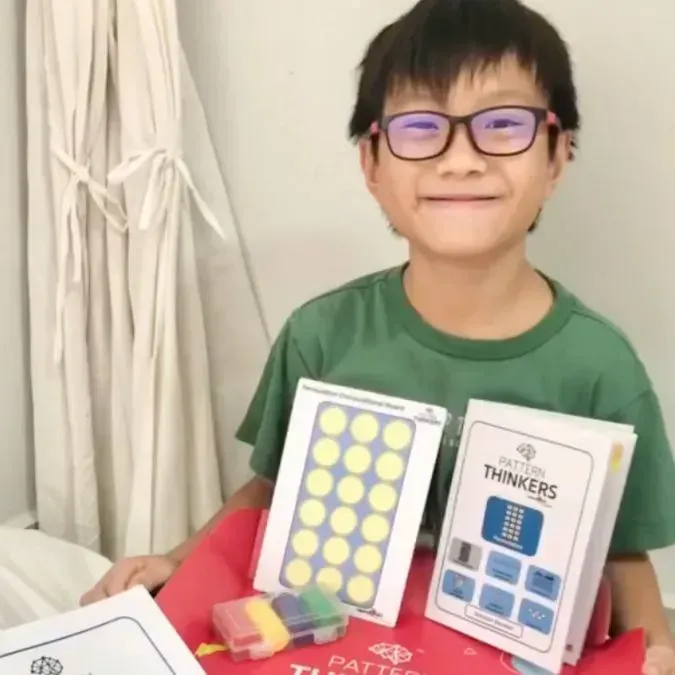
“N actually completed the four lessons quite quickly. In fact, he had so much fun with the second lesson that he asked to do the third lesson immediately after he finished the second one! I was really surprised, because which child asks to do extra learning, when he can play instead?”
Mrs Tan, growingwiththetans.com
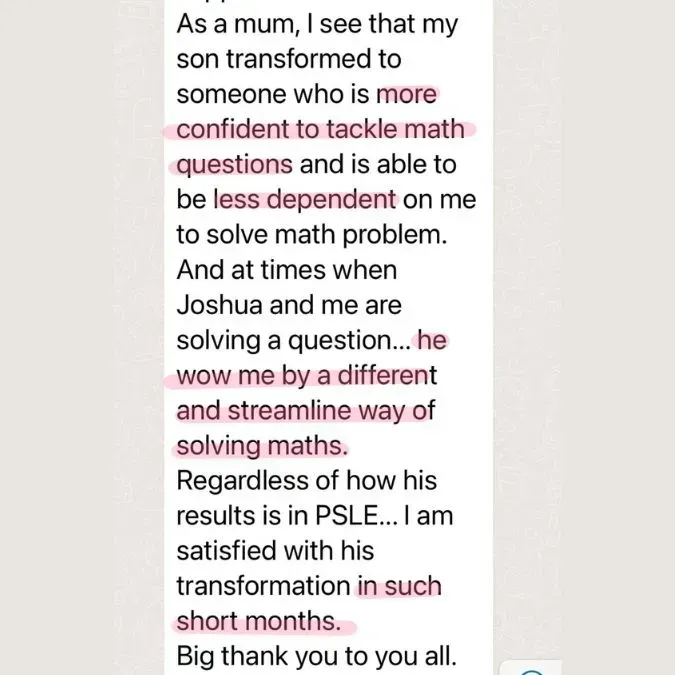
“My child’s science tutor asked, ‘What have you been doing with her?’ I was curious and asked, ‘Why do you ask?’ The tutor responded, ‘She’s grasping new concepts so quickly now, unlike before!’ So I said, ‘We started the Playful Genius program with her 5 weeks ago!.’”
Yvonne, mother of Sarah (9 years old)

Try it for 30 days
risk free
Remember you don't have to say YES right now. Just say MAYBE and let your child experience first 4 lessons of the Playful Genius system.
Your child must complete the material, watch the weekly video lessons, and submit all four assignments.
If, after doing so, your child still doesn’t develop VSAP thinking skills. You can keep our material, and we will give you a full refund.
No hassle, fast, and friendly. No more questions asked.
What parents say

Try it for 30 days
risk free
Remember you don't have to say YES right now. Just say MAYBE and let your child experience first 4 lessons of the Playful Genius system.
Your child must complete the material, watch the weekly video lessons, and submit all four assignments.
If, after doing so, your child still doesn’t develop VSAP thinking skills. You can keep our material, and we will give you a full refund.
No hassle, fast, and friendly. No more questions asked.
Transform your child into a confident and high-achieving Math student now - in less than 15 mins a day!
Avoid All Math Stress, Anxiety and Tension...
...Install Math Geniuses' way of thinking to succeed and achieve full potential.
WHAT'S INCLUDED
Access to the Playful Genius system.
Entire vault of 24 video lessons for the 6 month program. 1 video lesson unlocked each week.
1 Play Kit per month. Receive 6 Play kits when you invest in the full program.
1 Tutor to review your child's weekly assignment and progress.
PLUS: a special $200 off when you choose to pay in full (valid on this page only)
Transform your child into a confident and high-achieving Math student now - in less than 15 mins a day!
Avoid All Math Stress, Anxiety and Tension...
...Install Math Geniuses' way of thinking to succeed and achieve full potential.
WHAT'S INCLUDED
Access to the Playful Genius system.
Entire vault of 24 video lessons for the 6 month program. 1 video lesson unlocked each week.
1 Play Kit per month. Receive 6 Play kits when you invest in the full program.
1 Tutor to review your child's weekly assignment and progress.
PLUS: a special $200 off when you choose to pay in full (valid on this page only)
One-time investment
$4200
4 lessons per month.
Access to the Playful Genius System.
Entire vault of 24 video lessons for the 6 month program. 1 video lesson unlocked each week.
1 Play Kit per month
1 Tutor to review your child's weekly assignment and progress.
Try risk free for 30 days*

For your security, all orders are processed on a secured server.
Frequently Asked Questions
How does the program work?
At the Playful Genius we use a 3-in 1 hybrid approach.
While most education programs utilize at most one single dimensional for example:
Play kit and game based
OR only Online video lessons
OR teacher’s tutoring or assessment
Some might be a combination of both. But we utilize a unique 5 step game-based approach:
1. Each lesson begins with a real life Math problem to illustrate the importance and purpose of Math to kids
This overcomes the objection of “Why do I need to learn Math?” in kids.
2. Next, they learn math logic through the Playful Stories featured in our video lessons.
3. Concurrently, each lesson, they will HAVE CONCRETE PLAY time with the corresponding play kits to develop their VSAP skills. .
4. Before they tackle the real life math questions on the workbook again to further hone their Math VSAP skills.
5. Lastly, in order to assess if the student has got the concepts correctly without memorisation.
Although optional, we would like parents to record their children’s attempt at math questions and submit it to us.
Our teachers will assess and give you feedback about your child.
How will I know it's working for my child?
You’ll notice that your child will start to tackle math problems that you might not be able to.
And you’ll start to ask your child
“How did you solve it?”
“Why did you do it that way?”
As your child is able to explain the logic behind it.
They are reinforcing the knowledge they’ve learned.
And installing the math genius’s way of thinking.
And you’ll be so proud that they are able to tackle math problems that you can’t.
These are just a few benefits that you can notice in the first 4 weeks.
And in the next 3 months
You may notice that your child takes a shorter time to complete their math study and assignments.
They may stop feeling anxious or frustrated at Math.
They may stop prioritizing Math last and may start to prioritize it first.
Many are surprised to discover just how learning Math can be easy, fun and purposeful.
But when you think about how humans are meant to learn using as many senses as possible.
It’s easy to see that a program that combines physical toys, playful stories and lessons and a 3 step gentle approach to learning Math.
And if your child’s reignited interest in Math doesn’t convince you.
What you will see in their standardized tests result will.
How do I know if my child is going through the program correctly? How do I know if they truly understand or not?
Parents, I want to assure you that you don’t need to teach or mark anything.
The only task you have is to help your child record a video while they complete their weekly assignment and then submit it to us.
This is what sets our program apart from other online programs.
Most other platforms can take on as many students as possible, but once you purchase the program, you’re left to manage on your own, with no guidance on whether your child is doing it right or not. In our program, every student is assigned a dedicated teacher.
When your child submits their assignment, their teacher will carefully analyze the video to ensure they’re using the correct process and completing it properly.
Do I need to teach my kids?
You don’t need to worry, as all 24 weeks of lessons are already uploaded on our learning platform.
The relevant learning materials will also be shipped directly to you.
Your child simply needs to access and follow the lessons on a weekly basis—no teaching required on your part.
How do lessons progress?
For parents who are on the monthly subscription, we’ll send you a box each month, and you might wonder why we don’t send all the boxes at once.
That’s a great question! Each box contains tools, manipulatives, and custom-designed materials.
Some parents may worry they don’t have time to prepare all these items, but with Pattern Thinkers, you don’t have to. We assemble everything for you, including the specially customized materials.
Now, most companies would send all six boxes at once to fulfill their obligation, but I choose not to do that for two reasons. First, I don’t want to overwhelm you with all six boxes at once.
Second, by sending the boxes one at a time, there will come a moment when your child will excitedly ask, “Mom, when’s the next box arriving?” That’s when I’ll congratulate you, because it means your child is eagerly looking forward to learning!
Are we able to pause and replay the video lesson?
Yes, that’s one of the key features of our learning platform. Some learners grasp concepts quickly—they watch, understand, and move on to complete their assignments.
Others may need more time to process the information. If a student needs to pause, they can simply click pause to take time to think and digest before continuing.
If they still don’t fully understand after watching, they can always replay the lesson. This approach is designed to allow each child to progress at their own pace, unlike the traditional classroom model where everyone moves on at the same time, regardless of individual understanding.
As for submitting work, I recommend having students submit their assignments right after the lesson. After watching the video and understanding the material, they should complete the assignment with confidence. You can also allow them to submit a video of their final attempt if you’d like to boost their confidence.
In the second practice, students are expected to complete the task without watching the lesson. This helps them identify areas where they may struggle, such as connecting steps two and three, and allows them to go back and clarify.
The third practice is when they demonstrate their confidence. They should be able to show they understand the process from one step to the next. At this stage, submitting a video can also be a great choice. Ultimately, it’s up to you to decide which approach works best.
How long before my kid starts seeing results?
Every child learns at a different pace.
But I feel you should give Playful Genius at least 30 days to work its full magic.
And some children really start to see dramatic results after 60 days.
If your child completes one lesson per week. And takes 90 minutes per week Or 15 mins a day.
You will start to see your child’s math anxiety and frustration disappear within those first one to two months.
And once that anxiety starts coming off, you can expect their interest in Math to be ignited.
Take self-initiative to learn and tackle math problems without needing your supervision or nagging.
And here’s a question we’ve received from Sarah, in Singapore.
"My child has completed the 6 month Playful Genius Level 1 program. Her math, standardized test results have improved. And apart from that - her english teacher My child is in grade 1. Is this suitable?"
As long as your child knows how to count.
They are able to count from zero to one hundred. And they understand what is plus, what is minus what is times and divide and know how to use a calculator. They are good for this program.
The objective is to install the math genius way of thinking, and not to test them on the numerical computational part.
Can two siblings share one program?
Yes. Here’s how it works: A Playful Genius subscription includes one set of manipulatives, one account to access our learning management system, and one account for our teachers to analyze, mark, and assess assignments.
If you have two kids and want both to receive the same attention, we offer a sibling package. Instead of paying an additional USD1,500, you only need to add USD600.
Do contact our team for a special arrangement.
Both children will share the same set of manipulatives, but each will receive their own workbook. This means you’ll have two workbooks and two separate learning accounts.
When assignments are submitted, both children will have their work individually assessed by our teachers. Hope that clarifies!
How kids play with the game?
Frequently asked questions
How does the program work?
At the Playful Genius we use a 3-in 1 hybrid approach.
While most education programs utilize at most one single dimensional for example:
Play kit and game based
OR only Online video lessons
OR teacher’s tutoring or assessment
Some might be a combination of both. But we utilize a unique 5 step game-based approach:
1. Each lesson begins with a real life Math problem to illustrate the importance and purpose of Math to kids
This overcomes the objection of “Why do I need to learn Math?” in kids.
2. Next, they learn math logic through the Playful Stories featured in our video lessons.
3. Concurrently, each lesson, they will HAVE CONCRETE PLAY time with the corresponding play kits to develop their VSAP skills. .
4. Before they tackle the real life math questions on the workbook again to further hone their Math VSAP skills.
5. Lastly, in order to assess if the student has got the concepts correctly without memorisation.
Although optional, we would like parents to record their children’s attempt at math questions and submit it to us.
Our teachers will assess and give you feedback about your child.
How will I know it's working for my child?
You’ll notice that your child will start to tackle math problems that you might not be able to.
And you’ll start to ask your child
“How did you solve it?”
“Why did you do it that way?”
As your child is able to explain the logic behind it.
They are reinforcing the knowledge they’ve learned.
And installing the math genius’s way of thinking.
And you’ll be so proud that they are able to tackle math problems that you can’t.
These are just a few benefits that you can notice in the first 4 weeks.
And in the next 3 months
You may notice that your child takes a shorter time to complete their math study and assignments.
They may stop feeling anxious or frustrated at Math.
They may stop prioritizing Math last and may start to prioritize it first.
Many are surprised to discover just how learning Math can be easy, fun and purposeful.
But when you think about how humans are meant to learn using as many senses as possible.
It’s easy to see that a program that combines physical toys, playful stories and lessons and a 3 step gentle approach to learning Math.
And if your child’s reignited interest in Math doesn’t convince you.
What you will see in their standardized tests result will.
How do I know if my child is going through the program correctly? How do I know if they truly understand or not?
Parents, I want to assure you that you don’t need to teach or mark anything.
The only task you have is to help your child record a video while they complete their weekly assignment and then submit it to us.
This is what sets our program apart from other online programs.
Most other platforms can take on as many students as possible, but once you purchase the program, you’re left to manage on your own, with no guidance on whether your child is doing it right or not. In our program, every student is assigned a dedicated teacher.
When your child submits their assignment, their teacher will carefully analyze the video to ensure they’re using the correct process and completing it properly.
Do I need to teach my kids?
You don’t need to worry, as all 24 weeks of lessons are already uploaded on our learning platform.
The relevant learning materials will also be shipped directly to you.
Your child simply needs to access and follow the lessons on a weekly basis—no teaching required on your part.
How do lessons progress?
For parents who are on the monthly subscription, we’ll send you a box each month, and you might wonder why we don’t send all the boxes at once.
That’s a great question! Each box contains tools, manipulatives, and custom-designed materials.
Some parents may worry they don’t have time to prepare all these items, but with Pattern Thinkers, you don’t have to. We assemble everything for you, including the specially customized materials.
Now, most companies would send all six boxes at once to fulfill their obligation, but I choose not to do that for two reasons. First, I don’t want to overwhelm you with all six boxes at once.
Second, by sending the boxes one at a time, there will come a moment when your child will excitedly ask, “Mom, when’s the next box arriving?” That’s when I’ll congratulate you, because it means your child is eagerly looking forward to learning!
Are we able to pause and replay the video lesson?
Yes, that’s one of the key features of our learning platform. Some learners grasp concepts quickly—they watch, understand, and move on to complete their assignments.
Others may need more time to process the information. If a student needs to pause, they can simply click pause to take time to think and digest before continuing.
If they still don’t fully understand after watching, they can always replay the lesson. This approach is designed to allow each child to progress at their own pace, unlike the traditional classroom model where everyone moves on at the same time, regardless of individual understanding.
As for submitting work, I recommend having students submit their assignments right after the lesson. After watching the video and understanding the material, they should complete the assignment with confidence. You can also allow them to submit a video of their final attempt if you’d like to boost their confidence.
In the second practice, students are expected to complete the task without watching the lesson. This helps them identify areas where they may struggle, such as connecting steps two and three, and allows them to go back and clarify.
The third practice is when they demonstrate their confidence. They should be able to show they understand the process from one step to the next. At this stage, submitting a video can also be a great choice. Ultimately, it’s up to you to decide which approach works best.
How long before my kid starts seeing results?
Every child learns at a different pace.
But I feel you should give Playful Genius at least 30 days to work its full magic.
And some children really start to see dramatic results after 60 days.
If your child completes one lesson per week. And takes 90 minutes per week Or 15 mins a day.
You will start to see your child’s math anxiety and frustration disappear within those first one to two months.
And once that anxiety starts coming off, you can expect their interest in Math to be ignited.
Take self-initiative to learn and tackle math problems without needing your supervision or nagging.
And here’s a question we’ve received from Sarah, in Singapore.
"My child has completed the 6 month Playful Genius Level 1 program. Her math, standardized test results have improved. And apart from that - her english teacher My child is in grade 1. Is this suitable?"
As long as your child knows how to count.
They are able to count from zero to one hundred. And they understand what is plus, what is minus what is times and divide and know how to use a calculator. They are good for this program.
The objective is to install the math genius way of thinking, and not to test them on the numerical computational part.
Can two siblings share one program?
Yes. Here’s how it works: A Playful Genius subscription includes one set of manipulatives, one account to access our learning management system, and one account for our teachers to analyze, mark, and assess assignments.
If you have two kids and want both to receive the same attention, we offer a sibling package. Instead of paying an additional USD1,500, you only need to add USD600.
Do contact our team for a special arrangement.
Both children will share the same set of manipulatives, but each will receive their own workbook. This means you’ll have two workbooks and two separate learning accounts.
When assignments are submitted, both children will have their work individually assessed by our teachers. Hope that clarifies!
How kids play with the game?
What parents say
What Parents Say About The Program

"A.J. Juliani once said, ‘Our job is not to prepare the kids for something. Our job is to help students prepare themselves for anything.’ Playful Genius™ is one programme that can equip the children with the Mathematical thinking and skillset they need to tackle the tricky problems they will be facing soon in the upper primary and beyond."
Serene, mother of Vera (10 years old)

“N actually completed the four lessons quite quickly. In fact, he had so much fun with the second lesson that he asked to do the third lesson immediately after he finished the second one! I was really surprised, because which child asks to do extra learning, when he can play instead?”
Mrs Tan, growingwiththetans.com

“My child’s science tutor asked, ‘What have you been doing with her?’ I was curious and asked, ‘Why do you ask?’ The tutor responded, ‘She’s grasping new concepts so quickly now, unlike before!’ So I said, ‘We started the Playful Genius program with her 5 weeks ago!.’”
Yvonne, mother of Sarah (9 years old)
One-time investment
$4200
4 lessons per month.
Access to the Playful Genius System.
Entire vault of 24 video lessons for the 6 month program. 1 video lesson unlocked each week.
1 Play Kit per month
1 Tutor to review your child's weekly assignment and progress.
Try risk free for 30 days*

For your security, all orders are processed on a secured server.
